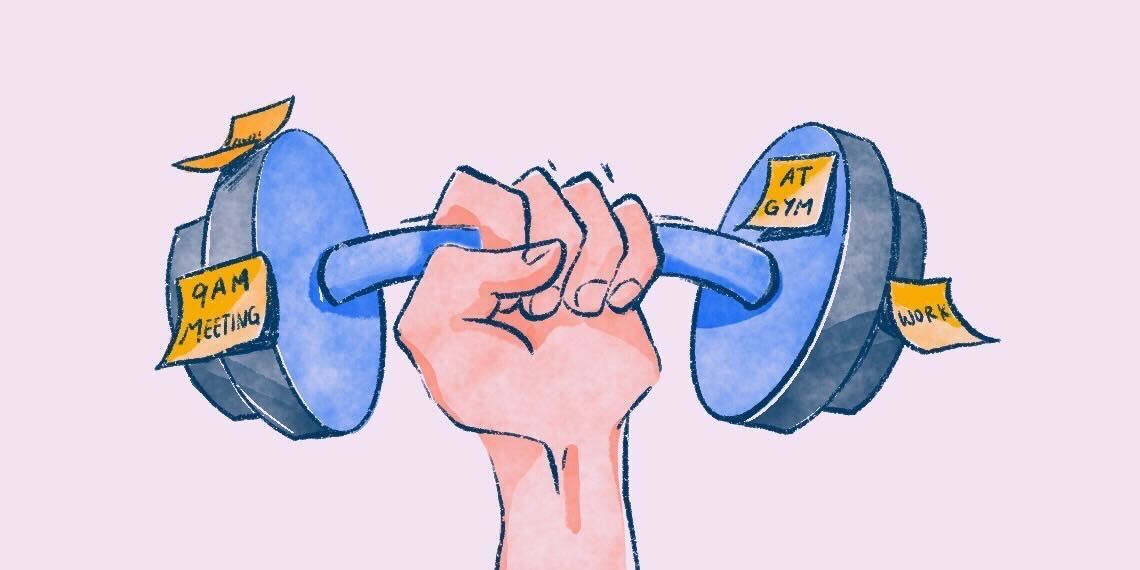How workers are boosting their step count on the job

During the days of mostly remote work, people were able to slip in a walk or midday workout often during their workdays. But stepping away from one’s desk to do some form of physical activity is getting trickier to do so with more time spent in offices. It’s driving staff to find unique solutions to stay active during their workdays.
Last month there was a 230% increase in Google searches for “10,000 steps a day” in the U.K. according to a report from Altro, a workplace safety firm. NHS (the U.K.’s national health service) figures estimated the average person only gets about 3,000 to 4,000 steps in a day.
Ultimately about 81% of U.K. office workers spend between four and nine hours each day at their desks, according to Altro’s report.
“People are feeling tired, lethargic, stuck, or stagnant at work, and needing something else to kind of support them through the day,” said Tori Mills, a licensed professional counselor at Thriveworks.
And of course fitness has a wide range of benefits beyond improving one’s physical health, and can actually help boost productivity, concentration and creativity.
“Sometimes it can be a release of frustration or energy. You can have an opportunity to process your thoughts. If you’re feeling kind of stagnant at your desk, it’s a way to calm down or get your creative juices flowing, or just break up the monotony of the day,” Mills said.
“Humans, by nature, aren’t sedentary beings, so when we spend so long stuck in the same place and position, it’s easy to lose steam – and quickly,” said Sarah de los Rios, sales and marketing director at Altro.
Here are some tips to get more steps in during the workday without totally changing your routine:
1: Get a standing desk or walk pad
One way to feel less sedentary during the workday is to get a standing desk and work while standing up. Standing desk converters also exist, which are placed on top of a traditional desk and can convert it from seated to standing. Those tools can also help improve posture and reduce back pain, according to Altro.
Other options include an under-desk walking pad, similar to a treadmill. Fans on those devices have taken to TikTok to share their experiences, and how they’ve enabled them to walk miles during their regular working day.
2: Make use of your lunch break
Lunch breaks are typically the only real designated break during the workday when staff can tend to other responsibilities, like their fitness. It’s an opportune time of day to get some steps in before an afternoon slump, and Altro experts suggest taking a short, brisk walk right after eating to help regulate blood sugar and increase blood flow.
“Using all of your brain power without any breaks is exhausting, so by making as many breaks you take throughout the day as active ones, you’re also giving your brain the opportunity to rest,” De Los Rios said.
3: Think about walking to work
Walking to work isn’t possible for everyone, but it’s possible to add more steps during one’s commute. For instance, you can park your car a little further away than usual, or get off public transport a stop or two early to get some more physical activity in at the beginning or end of the day. Getting off a mile early would add 2,000 extra steps and only about 15 to 20 minutes to one’s commute, making it a worthy option, according to Altro’s report.
4: Set up a walking group
Another option is to set up a walking group at your workplace. Working out alone can be daunting for some people who don’t do it regularly, and walking with others provides an added safety element. It can also give a greater sense of community as an added bonus.
“Getting out just one night a week after work, especially as the nights get lighter is an excellent way to wind down after work. Why not set up a night a week to walk with coworkers?” suggested Altro.
It’s important for employers to support these efforts and encourage people to be active together at work, said De Los Rios.
5: Take more calls on the move
Walking meetings took off during the pandemic and remote work as people desperately sought to leave their homes. Taking calls while walking can be tricky though depending on the nature of the call or meeting. But of course, many calls and meetings might as well have just been emails, so workers should try to identify those lighter-lift calls and decide to take those on the move.
“By taking a period of the day that you would’ve spent sitting, and making it an active part of your day instead, can also be hugely beneficial for your health. Especially if you commit to doing it a few times a week,” the report said.


